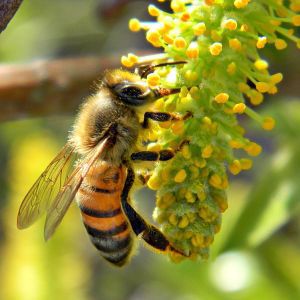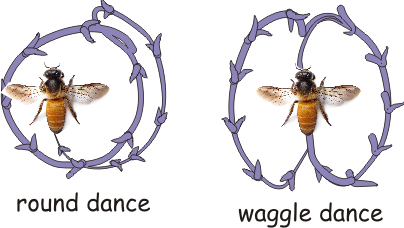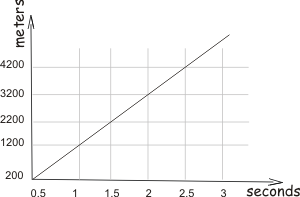
They dance. It’s a specific solar dance, done while waggling their abdomen. It’s the way honey bees communicate where food is. It is also called waggle dance, or solar dancing. Their scout honey bees go out and search for good nectar and pollen sources. When they return, they tell the others the distance and the direction of those sources. For this, they perform the waggle dance.
Who discovered it and how?
The professor of zoology from the University of Munich in Germany, Karl von Frisch, managed to understand the honey bee dance movements. After decades of studies and research, he and his students managed to describe the components of each dance. For this, they used a glass-walled hive and painted the bees for better recognition.
Others said it’s only floral odors on a forager’s body that tell the others where the good floral source is.
At the end, it has been proved with the help of a robot bee, that both the dance and the odor, tell the other bees about the nectar source.
How is the distance and direction communicated?
– if the distance is under 50 meters the forager bees perform a round dance (see picture). They run around in narrow circles, suddenly reversing direction to its original course. They repeat the dance several times in the same place or move to another location on the comb to repeat it and let others know. These circles mean “close to the hive”.
– if the distance is between 50 and 150 meters from the hive, the bees perform a sickle dance. This dance is crescent-shaped and represents a transitional dance between a round dance and a waggle dance.
– if the distance is more than 150 meters from the hive, the bees do the waggle dance (see picture), or the wag-tail dance or the solar dancing. Compared with the round dance which communicates only distance, this dance also communicates direction.
The dance resembles the figure eight: the bee is running straight ahead for a short distance, then does a semicircle towards the starting point. Again straight ahead and again the semicircle in the opposite direction. While running in the straight line of the dance, the bees wag their body, especially the abdomen. This makes a tail-wagging motion. At the same time, the bees produce a buzzing sound, made by the wing beats, at a low audio frequency of 250 to 300 hertz or cycles per second.

The distance:
The duration of the straight line dance, measured in seconds is the  indicator of the distance. The bigger the number of seconds the bigger the distance in meters.
indicator of the distance. The bigger the number of seconds the bigger the distance in meters.
(see figure)
The direction:
The orientation of the straight line indicates the location relative to the sun. It’s not a common thing to humans, the dancing bees transpose the solar angle into the gravitational angle.
Keep in mind that the combs are vertical, so they walk on a vertical surface. Even more, there is dark in the hive, so they cannot see each other. That’s why they will keep close to the waggling bee so they feel its movements.
E.g.:
– If the food source is in the same direction as the sun, the waggle straight line will be directly upward on the honey comb.
– If the food source is located at the opposite side of the sun, the straight line will be performed vertically downward.
– If the food source is 60 degrees to the left of the sun, the waggle run will be 60 degrees to the left of vertical. And if we compare it to a clock, if the nectar source is 30 degrees to the right of the sun (which is at 12.:00), the dance will be performed at about 2:00.
The orientation of the dance changes with the sun position in the sky, time of the year, day, and geographical location.
Bellow there is an incredible video showing the waggle dance:
Related articles:
• Can a honey bee see, smell, taste, touch, speak?
• The honey bee QUEEN
• The jobs of a bee. What is the life of a bee?
• Japanese Honeybees vs Giant Hornet
• How to treat bee sting
References:
David R. Tarpy – Assistant Professor and Extension Apiculturist, North Carolina State University in “The waggle dance”
http://en.wikipedia.org/wiki/Waggle_dance

Hi, fantastic website! Can I use the illustration of the waggle dance on the blog I write for the benefice website and also another that I and my boss are writing for her plant nursery business? I will be linking to this website on both as it is so informative. Best wishes Pauline
Hi Pauline,
Yes, you can do that, of course. Links are much appreciated.
thank you
Hi, I am working on a curriculum for 2nd graders to study bees and beekeeping. I would love to use your illustrations of the waggle dance to show how they communicate (they are simply amazing!).
They are the clearest and nicest I could find to help explain what the bees do.
Could I have your permission to use them?
I would give you credit if you tell me how you would like it to read.
Thanks so much! Barbara
PS. I tried to send this to you via the “contact” but all it did was SPIN! Sorry, it you get 2 requests.
That’s fine, Barbara, you can use them. And it would be great if you inserted a link to the website (as source of the picture).
thanks.
wow! it’s amazing how mother nature came up with all this stuff! who would have thought! thanks for such interesting information.
It must be an incredible creature to make such an incredible food like honey! 🙂 Thanks for dropping by.
laura
It’s quite amazing how beings, other than ourselves, communicate with each other. And here I always though they were just “winging” it by flitting from flower to flower!
Yes, you’re right. I wonder what the bees think about humans, who keep stealing their honey all the time. 🙂
laura
wow, amazing information Laura. I remember a couple of years ago, there was a huge scare that honey bees were disappearing from the earth. Do you have any knowledge to share here? I’d love to have some information.
Unfortunately this was true. Still is. I will post something about this soon.
laura
Now that is something that I did not know about bees. Very interesting. I hope to soon have a bee hive in my yard and be able to harvest fresh honey from time to time.
I envy you. To be able to eat fresh honey, right from the hive… Amasing.
laura